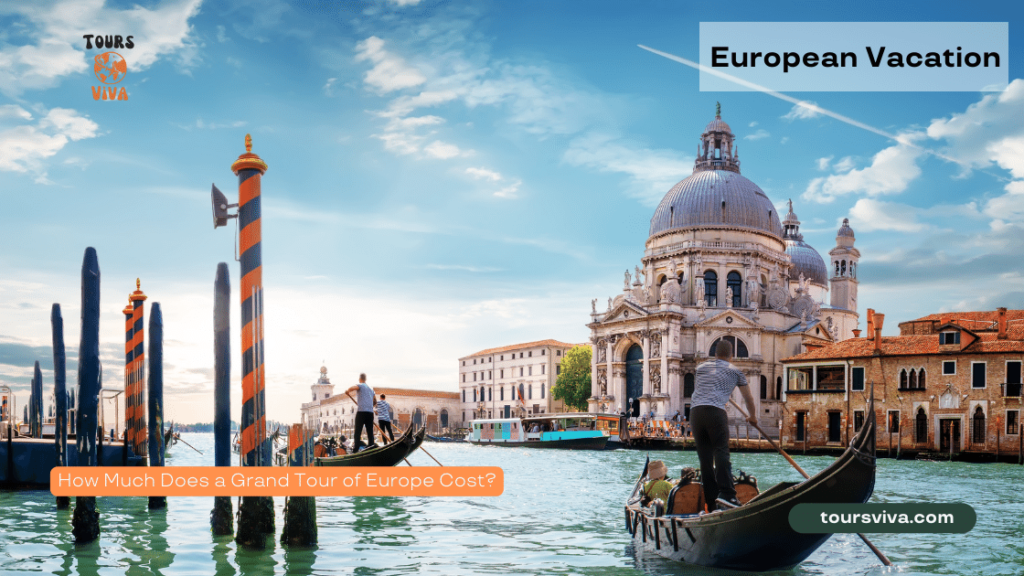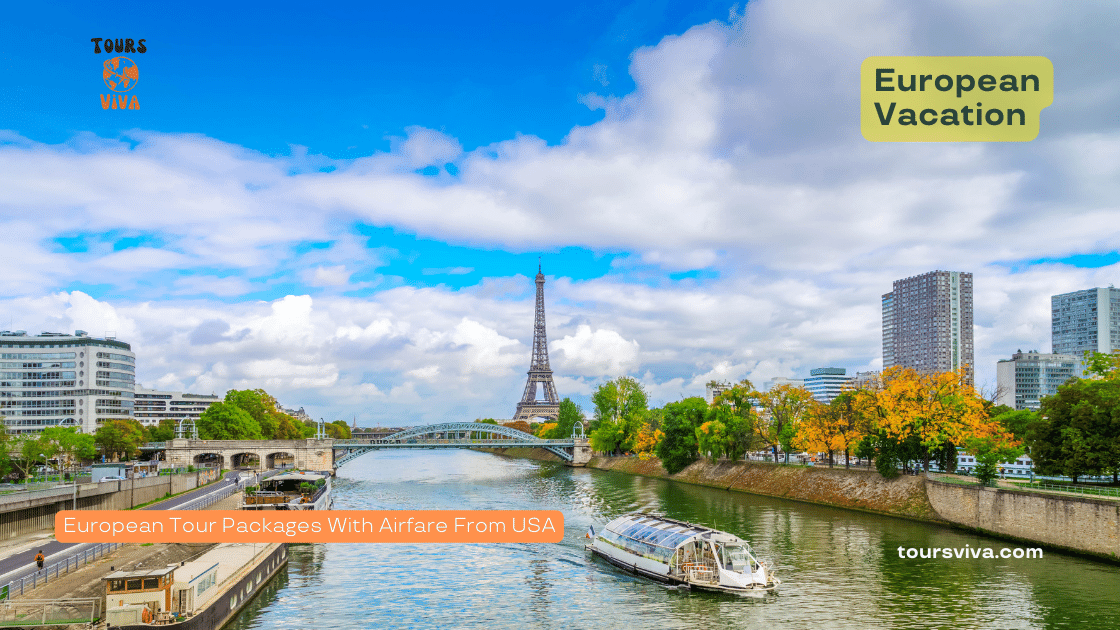European Tour Packages with Airfare 2024 from USA: Your Ultimate Guide
The Best Way to Tour Europe
So, you’ve decided to embark on a grand adventure across Europe, looking for the best way to tour this magnificent continent. Well, you’re in luck! There are several fantastic options, depending on your preferences and travel style.
Guided Tours
Guided tours can take the stress out of planning, as they usually include accommodations, transportation, and entrance fees to various attractions. You’ll be led by a knowledgeable guide who can provide invaluable insights into the history and culture of each destination. This option is perfect for first-time travelers who want a hassle-free experience.
Self-Guided Tours
If you’re more of an independent spirit, self-guided tours could be your best bet. These packages typically provide accommodations and transportation, but you’ll be free to explore at your own pace. It’s a great way to immerse yourself in the local culture and create a personalized itinerary.

Train Travel
Europe is renowned for its extensive and efficient rail network. Train travel lets you enjoy stunning landscapes and easily hop from city to city. Plus, it’s an eco-friendly way to explore the continent!
Road Trips
For those who prefer the open road, renting a car and embarking on a European road trip might be the ideal choice. This option offers unparalleled flexibility and the opportunity to discover hidden gems off the beaten path.
Where to Book Europe Trips
Booking the perfect European trip can be daunting, but fear not! Several reputable platforms offer a variety of tour packages to suit your needs.
Travel Agencies

Traditional travel agencies have knowledgeable agents to help you plan and book your dream vacation. They’ll provide personalized recommendations and handle all the details for you.
Online Travel Platforms
Online travel platforms like Expedia, Kayak, and TripAdvisor offer a wealth of information and booking options for European vacations. You can easily compare prices, read reviews, and customize your itinerary.
Tour Operators
Tour operators such as Trafalgar, Insight Vacations, and Contiki specialize in creating comprehensive tour packages that cater to different interests and budgets. They offer a range of guided and self-guided tours to help you make the most of your European adventure.
Embrace Cultural Differences
One of the most enriching aspects of traveling to Europe is the opportunity to experience its diverse cultures. Take the time to learn a few basic phrases in the local language, sample traditional cuisine, and engage with locals to understand better the countries you visit.
How Far in Advance Should I Book a European Vacation?
Timing is crucial when booking your European vacation. Booking your trip 6 to 9 months in advance is generally recommended to snag the best deals and ensure availability. Booking early lets you secure your preferred accommodations, flights, and tour packages. However, if you’re more of a spontaneous traveler, last-minute deals can sometimes offer significant saving
continue, but keep in mind that availability may be limited, and you might have less flexibility in your itinerary.
How Much Does a Grand Tour of Europe Cost?

The cost of a grand tour of Europe can vary greatly depending on factors such as the duration of your trip, the countries you visit, your accommodation preferences, and the activities you choose to partake in. As a rough estimate, a two-week guided tour with multiple countries can cost anywhere from $2,000 to $5,000 per person, excluding airfare.
Budget travelers can expect to spend around $50 to $100 daily, while mid-range travelers might spend $100 to $200 daily. Luxury travelers can easily exceed $300 per day, depending on their preferences.
To save money, consider traveling during the off-season, staying in budget accommodations, and taking advantage of free or low-cost activities.
How Much is a Plane Ticket to Europe from the USA?
The cost of a plane ticket to Europe from the USA can vary greatly depending on your departure city, destination, and the time of year you travel. Generally, you can expect to pay anywhere from $400 to $1,200 for a round-trip economy ticket.
To find the best deals, consider the following tips:
| Tips for Finding the Best Deals | Description |
|---|---|
| 1. Be flexible | Adjust your travel dates and departure city to find better deals. |
| 2. Use search engines | Compare prices on Google Flights, Skyscanner, or Momondo. |
| 3. Book in advance | Purchase your flights 2 to 6 months before your trip. |
| 4. Look for sales and promotions | Keep an eye on airlines for special deals and discounts. |

- Be flexible with your travel dates and departure city.
- Use search engines like Google Flights, Skyscanner, or Momondo to compare prices.
- Book your flights 2 to 6 months in advance.
- Keep an eye out for sales and promotions from airlines.
The Best Time of Year to Visit Europe
Europe offers something year-round, but the best time to visit depends on your preferences and travel goals.
| Season | Pros and Cons |
|---|---|
| Spring (March to May) | Pros: Mild temperatures, landscapes in full bloom, thinner crowds, more affordable prices. Cons: Some attractions may still be closed or have limited hours. |
| Summer (June to August) | Pros: Warm temperatures, long days, vibrant atmosphere, numerous festivals and events. Cons: Larger crowds, higher prices, limited availability. |
| Fall (September to November) | Pros: Warm temperatures, long days, vibrant atmosphere, numerous festivals, and events. Cons: Larger crowds, higher prices, limited availability. |
| Winter (December to February) | Pros: Unique charm, festive atmosphere, holiday markets, winter sports, more affordable prices. Cons: Cold and snowy, shorter daylight hours, potential weather-related delays. |

Spring (March to May)
Spring is a lovely time to visit Europe; temperatures are mild, and the landscapes are fully bloomed. The crowds are thinner during this time, making it easier to explore popular attractions. Plus, airfare and accommodation prices are generally more affordable.
Summer (June to August)
Summer is the peak tourist season in Europe, with warm temperatures and long days ideal for outdoor activities. However, expect larger crowds, higher prices, and limited availability. If you are okay with the hustle and bustle, this season offers a vibrant atmosphere and numerous festivals and events.
Fall (September to November)
Fall is another great time to visit Europe, as the weather is still pleasant, and the foliage creates a stunning backdrop. Prices drop, and the crowds dissipate, making it a more relaxed travel experience.
Winter (December to February)
Winter in Europe can be cold and snowy, but it also offers a unique charm with its festive atmosphere, holiday markets, and winter sports opportunities. Traveling during this time can be more affordable, but be prepared for shorter daylight hours and potential weather-related delays.
Stay Safe and Informed
Before departing, research local customs, safety concerns, and any travel advisories for the countries on your itinerary. Sign up for the Smart Traveler Enrollment Program (STEP) to receive updates and assistance from the US Embassy in case of an emergency.
Ultimately, the best time to visit Europe depends on your preferences and what you hope to experience. Considering these factors, you will surely have an unforgettable European adventure!







